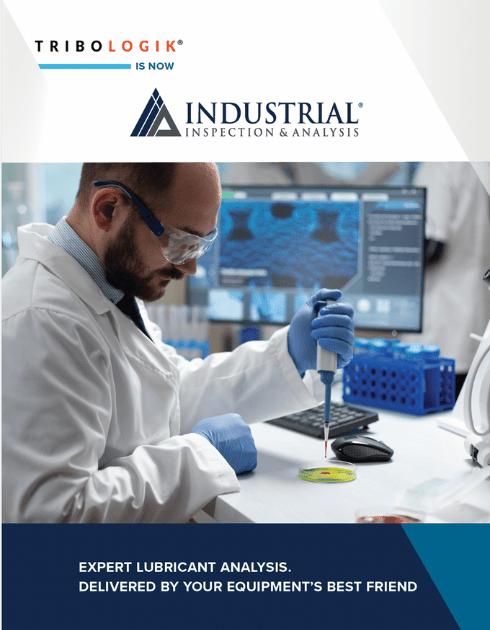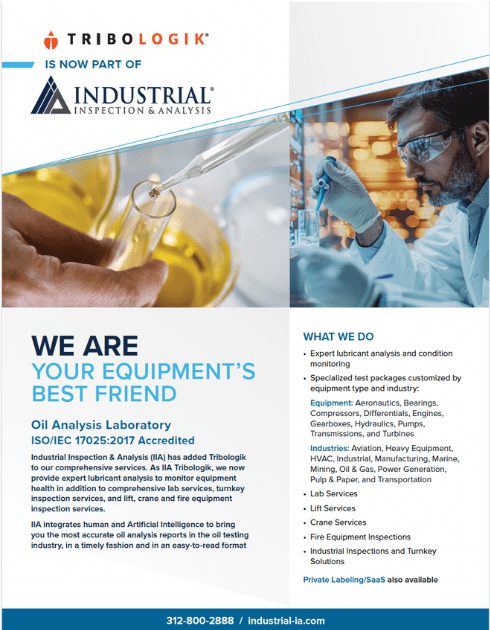Grease Testing & Analysis
Our team will also test and analyze grease to identify any contaminants and impairments in its ability to flow through equipment and protect metal surfaces.
Lithium, Viscosity & Dropping Point
Grease is used to lubricate sealed parts and components that cannot be lubricated frequently or that require higher viscosity and more resistance than oil. Some examples of equipment that operate in harsh conditions with these requirements are those with high speed and high load components such as roller bearings.Grease is a mixture of three types of ingredients:
Large, high-speed bearing greases should be tested frequently to monitor the depletion of lithium, viscosity and dropping point. The dropping point is the temperature at which a grease will degrade from a semi-solid to a liquid state.
Talk To An Expert
Don’t see exactly what you are looking for? Or maybe you do and want more specifics or an estimate. Either way, you can call us at
470-264-5765
right now or just fill out the form below and we will respond back within 24 hours.
Dropping Point of Lubricating Grease (GDP) - ASTM D566
The Dropping point of a lubricating grease is the temperature at which the grease passes from a semi solid to a liquid state. This grease test establishes and maintains benchmarks for quality control, while identifying the type of grease sampled.
Ferrous Debris Mag./Grease (FDM) - GE Method
Ferrous Debris Monitor uses magnetometry to measure the wear metal particle contamination of an oil or grease sample and provides trendable parts per million (PPM) results, regardless of the size of the particles. Because its results are provided in PPM, FDM is regarded as an advanced PQ test. The latter indeed only shows them as a unitless index. FDM can be used to measure un-combined ferrous wear metal particle debris in oil or grease in a wide range of types of industrial and marine machinery.
GRSPQ (GRSPQ)
A combination of ICP spectroscopy and Particle Quantifier Index (PQ) will detect wear metal particles and ambient dirt contaminants. Both these tests are complementary: spectroscopy will provide information on the depletion or not of lithium and detect small wear metal particles. PQ will detect wear metal particles regardless of their size, where the concentration, hardness and larger particles may end up causing critical damage.
ICP Spectrometric Analysis (Grease) (GRS)
Lithium soap is the most important thickening additive in industrial greases. ICP spectroscopy will provide information on the depletion or not of lithium and detect small wear metal particles (less than 6 microns).
Particle Quantifier Index (PQ) - Manufacturer
The particle quantifier index test measures the mass of ferrous wear debris in a sample and displays this as PQ index by Hall Effect regardless the particle size. PQ index is a unitless quantitative number and can be trended with acceptable linearity over a wide range of ferrous debris content and particle sizes. The larger the index the greater the ferrous wear content.
Water % in Grease (WGRS) - Tribologik Proprietary Method
Too much water in grease can reduce its thickness, cause water washout, leading to base oil oxidation and ultimately bearing corrosion. The purpose of this test is to make sure that the percent of water in the grease sample does not exceed the recommendations of the manufacturers.


